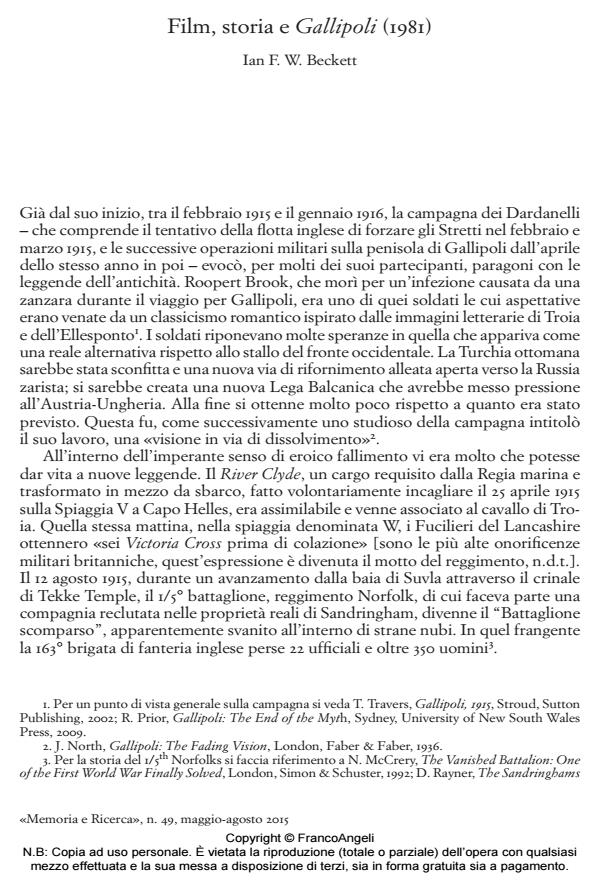Film, History and Gallipoli (1981)
Journal title MEMORIA E RICERCA
Author/s Ian F. W. Beckett
Publishing Year 2015 Issue 2015/49 Language Italian
Pages 19 P. 87-105 File size 154 KB
DOI 10.3280/MER2015-049007
DOI is like a bar code for intellectual property: to have more infomation
click here
Below, you can see the article first page
If you want to buy this article in PDF format, you can do it, following the instructions to buy download credits

FrancoAngeli is member of Publishers International Linking Association, Inc (PILA), a not-for-profit association which run the CrossRef service enabling links to and from online scholarly content.
The landing of the Australian and New Zealand Army Corps (Anzac) at ‘Anzac Cove’ at Gallipoli on 25 April 1915 became symbolic of a new Australian national identity, and crucial in what has become characterised as the Anzac myth. The myth had it that Australians sacrificed to the incompetence of British military leadership, not least in the attack of Australian Light Horse on the ‘Nek’ on 7 August 1915. The myth is still alive and well. Crucially part of that process was the role of Australian cinema, from the first quasi-documentary in 1915 to Peter Weir’s Gallipoli in 1981. The latter in particular has recast the myth for a new generation. Gallipoli has continued to inspire filmmakers with British, New Zealand and even Turkish productions in more recent years displaying other agendas. The essay examines the cinematic history of the Gallipoli campaign in the context of contrasting myths and realities.
Keywords: Myth; memory; national identity; Gallipoli; historical accuracy; inter- media storytelling.
Ian F. W. Beckett, Film, storia e Gallipoli (1981) in "MEMORIA E RICERCA " 49/2015, pp 87-105, DOI: 10.3280/MER2015-049007